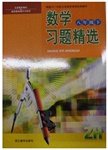题目内容
We hear with our ears, right? Yes, but scientists have known for years that we also hear with our eyes. In a study published in 1976, researchers found that people combined both auditory cues(听力提示) and visual ones,like mouth and face movements, when they heard speech.
A new study that looks at a different set of sensory cues adds to a growing body of evidence that suggests such combination is natural. In a paper, Bryan Gick and Donald Derrick report that people can hear with their skin.
The researchers had volunteers listen to spoken syllables. Meanwhile, they connected the volunteers to a device that would blow a tiny puff (气流) of air onto the skin of their hands or necks. The syllables included “ba” and “pa”, which produce brief puffs from the mouth when spoken, and “da” and “ta,” which do not produce puffs. They found that when listeners heard “da” or “ta” while a puff of air was blown onto their skin, they considered the sounds as “ba” or “pa”.
Dr. Gick said the findings were similar to those from the 1976 study, in which visual cues defeated auditory ones — volunteers listened to one syllable but thought it another because they were watching a video of mouth movements corresponding to the second syllable. In his study,he said,cues from sens ory receivers on the skin defeate
ory receivers on the skin defeate d the ears as well. “Our skin is doing the hearing for us,” he said.
d the ears as well. “Our skin is doing the hearing for us,” he said.
Dr. Gick noted that it would normally be rare that someone actually sensed a puff of air produced by another, although people might occasionally sense their own puffs. “What’s so persuasive about this particular effect,” he added. “is that people are picking up on this information that they don’t know they are using.” That supports the idea that combining different sensory cues is natural.
Dr. Gick said the finding also suggested that other sensory cues might be at work in speech perception(知觉) — that, as he put it, “we are these fantastic perception machines that take in all the information available to us and combine it faultlessly.”
【小题1】“Da” or “ta” were considered as “ba” or “pa” when __________.
| A.they were spoken quickly |
| B.puffs of air were blown onto the listener’s skin |
| C.they were pronounced using a special device |
| D.they were made with face movements |
| A.Humans combine different sensory cues through experience. |
| B.Dr. Gick’s new study is more important than the one in 1976. |
| C.People sometimes can sense their own puffs when speaking |
| D.Only auditory and visual cues are at work in speech perception. |
| A.We Can Hear with Our Skin |
| B.Our Visual Cues Is Doing the Hearing for Us |
| C.Facial Expressions Are Important |
| D.We Are Fantastic Machines |
【小题1】B
【小题2】C
【小题3】A
解析

 习题精选系列答案
习题精选系列答案In order to learn a foreign language well,four things are necessary. First,we must understand the language when we hear it spoken.Secondly, we must be able to speak it ourselves, with confidence and without hesitation(犹豫). Thirdly,we must do much reading. Finally, we must be able to write it. We must be able to make sentences that are correct in grammar.
There are no shortcuts to success in language learning. A good memory is a great help,but it is not enough only to memorize the rules from a grammar book.It is not much learning by heart long lists of words and their meanings,studying the dictionary and so on.We must learn by using the language.
If we are pleased with a few rules we have memorized,we are not really learning the language.We must “learn through use.” Practice is important.We must practise speaking and writing the language whenever we can.
【小题1】The most important things to learn a foreign language are _____.
| A.understanding and speaking |
| B.listening,speaking,reading and writing |
| C.writing and understanding |
| D.memorizing and listening |
| A.he doesn’t understand the language when he hears it spoken |
| B.he doesn’t have a good memory |
| C.he always remembers lists of words and their meanings |
| D.he often hesitates(犹豫)to practise speaking it |
| A.doing much practice | B.studying the dictionary |
| C.learning through use | D.using the language |
| A.good memory | B.Speaking. | C.Practice. | D.Writing |